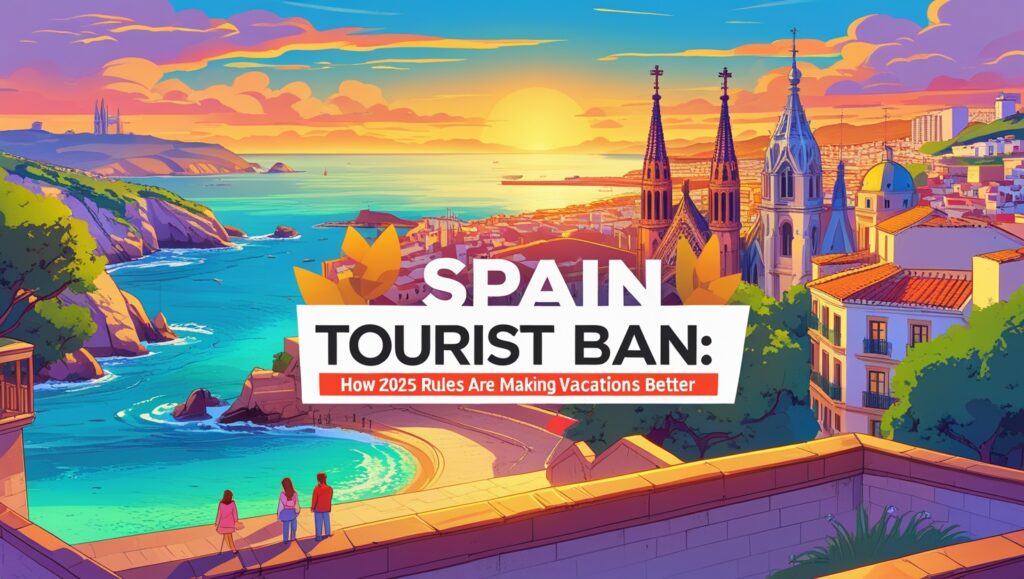
Spain is renowned for its lively culture, rich history, and sunny squares. However, a new era of tourism has begun in 2025. Beginning in April 2024, Spain is dealing with a major wave of anti-tourism protests. The Canary Islands, Barcelona, and the Balearic Islands (including Mallorca, Menorca, and Ibiza) have all seen a surge in these protests. As overtourism results in increased living expenses, housing shortages, environmental harm, and a loss of cultural identity, locals are demanding change. All of the regulations that have resulted from these protests are collectively referred to as the Spain Tourist Ban. This blog examines how these regulations are changing Spanish vacations and providing a brighter future for visitors and locals alike.
The Roots of the Movement
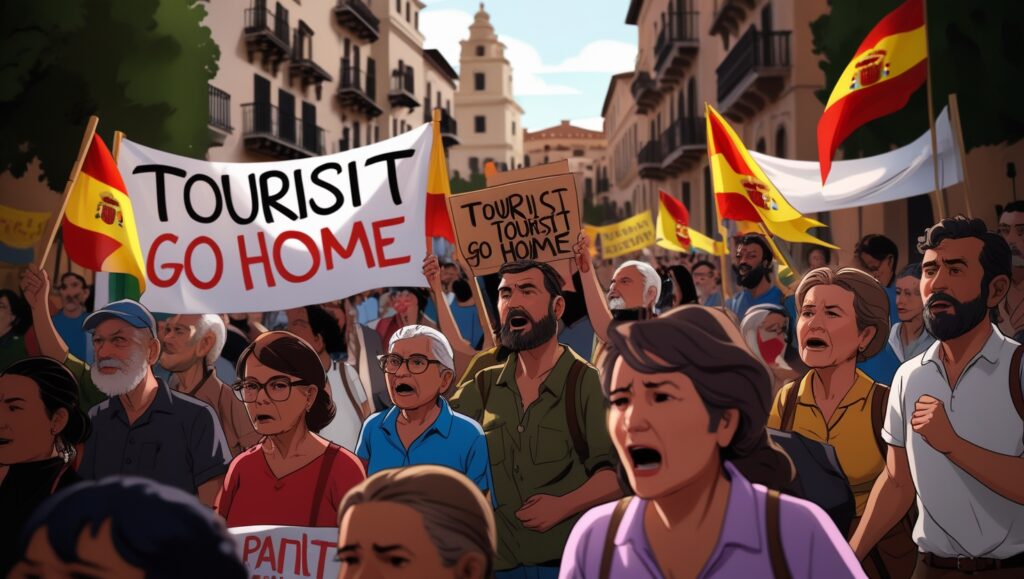
The drive for eco-friendly travel has accelerated since April 2024. To lessen the effects of mass tourism, communities all over Spain have staged protests. About 20,000 people demonstrated in Palma de Mallorca in July 2024 with the banner, “Let’s change course and set limits on tourism.” The sharp disparity between the island’s 1.2 million inhabitants and the 18 million visitors it receives annually was brought to light by this demonstration. The protests compelled authorities to take action, leading to the creation of the Spain Tourist Ban, which aims to strike a balance between the number of tourists and the standard of living of locals.
Locals contend that excessive tourism strains infrastructure, degrades the environment, and raises housing and living expenses. Additionally, a lot of residents believe that their cultural legacy is in danger. In order to benefit both tourists and the local population, they want tourism to be managed. The goal of the Spain Tourist Ban is to change the emphasis from quantity to quality, not to completely prohibit travel.
Key Regulatory Measures
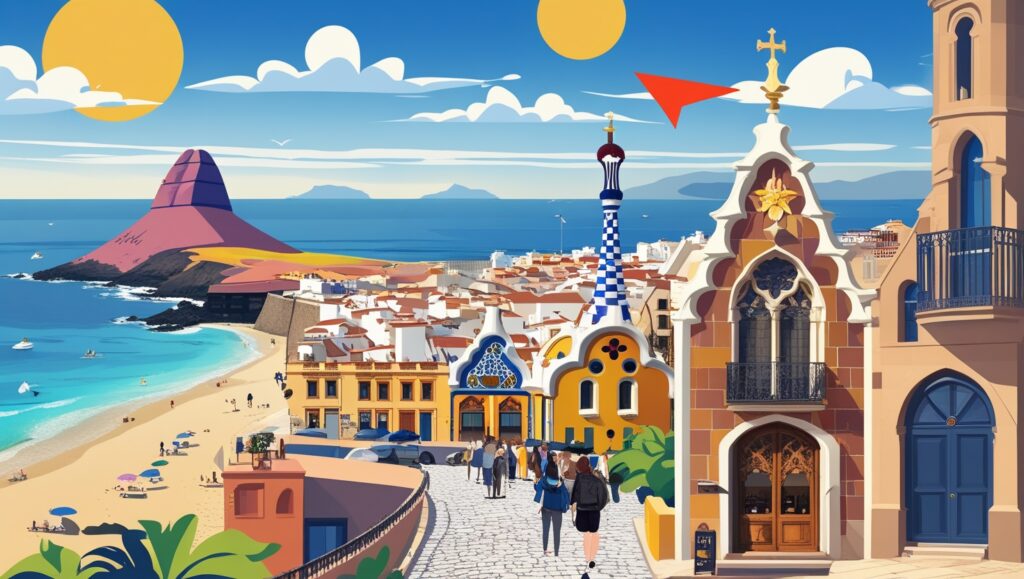
Strict regulations have been proposed or put into place in a number of regions in response to growing protests. The Spain Tourist Ban initiative is based on these rules. The following are some significant actions taken:
Prohibiting Alcohol Consumption in Tourist Areas:
Public drinking is now prohibited in some areas. Visitors who break this rule risk fines of up to $1,700 USD (€1,500 in euros). The purpose of this measure is to reduce disruptive behavior in popular tourist locations.
Restricting the number of hotel rooms and cruise ship arrivals:
Authorities have placed restrictions on the number of new hotel rooms and cruise ship arrivals in Palma de Mallorca. By taking this action, the local infrastructure will be less stressed and tourism will continue to be sustainable.
Postponing Increases in Tourist Taxes:
A planned hike in tourist taxes in Catalonia has been postponed until at least October 2025. Local communities have time to adapt and reevaluate their needs as a result of this delay.
Limiting Licenses for Short-Term Rentals:
Barcelona is currently limiting new licenses for short-term rentals. The intention is to lessen the impact of tourist apartments on the local real estate market. By 2028, 10,000 tourist apartments will be phased out by the authorities.
Additional Local Actions:
Beginning on January 14, 2025, 43 districts in Malaga imposed a three-year moratorium on new short-term rental registrations. As a form of enforcement, Seville has granted local authorities the authority to cut off water supplies to unlicensed tourist apartments.
The main goal of the Spain Tourist Ban is to bring tourists and locals back into balance. In order to shield local communities from the detrimental effects of excessive tourism, they are a part of a larger movement in Southern Europe that advocates for tourism de-growth.
Tourism Statistics and Economic Impact
Spain still welcomes foreign visitors in spite of these stringent measures. The nation saw a record 94 million foreign visitors in 2024. Compared to 2023, this figure represented a 10% increase. Financially speaking, tourism brought in about $135 billion USD (€126 billion converted). 85.1 million tourists visited Spain in 2023, and the travel industry made up around 12% of the nation’s GDP. These economic statistics show that although tourism stimulates the economy, improper management of it can also put a strain on local resources. The goal of the Spain Tourist Ban is to make sure that local communities do not suffer as a result of tourism’s economic benefits.
Short-Term Negative Impacts
These actions have a range of immediate effects. There is a temporary decline in the demand for tourists in some places. Hotspots like Barcelona, the Canary Islands, and Mallorca may be avoided by tourists who prefer party-style vacations or who are unaware of local laws. Visitors looking for carefree experiences may be turned off by harsh regulations and unfavorable media coverage of protests. Furthermore, the restrictions on short-term rentals might temporarily result in a shortage of lodging and higher costs. All of these elements work together to cause a brief decline in tourism while the new regulations are implemented.
Medium to Long-Term Adjustments
Prioritizing high-quality travel is anticipated to have major long-term advantages. The focus on “quality over quantity” might draw more affluent and responsible tourists. As tourists search for other places to visit, areas that are less impacted by the Spain Tourist Ban regulations, like some areas of mainland Spain, may see an increase in tourism. As the strain on public services and housing markets is reduced, better living conditions for residents are also expected. Furthermore, long-term environmental preservation and economic stability can result from the shift to sustainable tourism. A balanced approach to tourism that benefits both locals and tourists is supported by this medium- to long-term change.
Potential Opportunities for Innovation
The Spain Tourist Ban’s modifications create a number of opportunities:
Innovation in Eco-Tourism:
The market for eco-tourism and cultural tourism is expanding as a result of tighter regulations on mass tourism. Experiences that emphasize authenticity, heritage, and nature are already being funded by local companies and entrepreneurs.
Improved Destination Reputation:
Spain’s standing as an ethical and alluring travel destination can be enhanced by clear regulations and sustainability objectives. Tourists might be more inclined to support tourism models that uphold the natural beauty and respect local customs.
Diversification of Tourism Offerings:
Small towns and lesser-known areas may become more visible as a result of restrictions in traditional hotspots. The overall quality of the tourist experience is improved by this diversification, which also more fairly distributes the economic gains throughout Spain.
These prospects imply that the Spain Tourist Ban may eventually improve Spain’s tourism sector by making it more diversified, sustainable, and centered on genuine cultural experiences.
Regional Itineraries for the Mindful Traveler
For first-time visitors, following well-planned itineraries is essential. With the Spain Tourist Ban rules in place, tourists are encouraged to engage in experiences that respect local customs. Below is a regional breakdown of itineraries across Spain’s most affected areas.
Canary Islands Itinerary
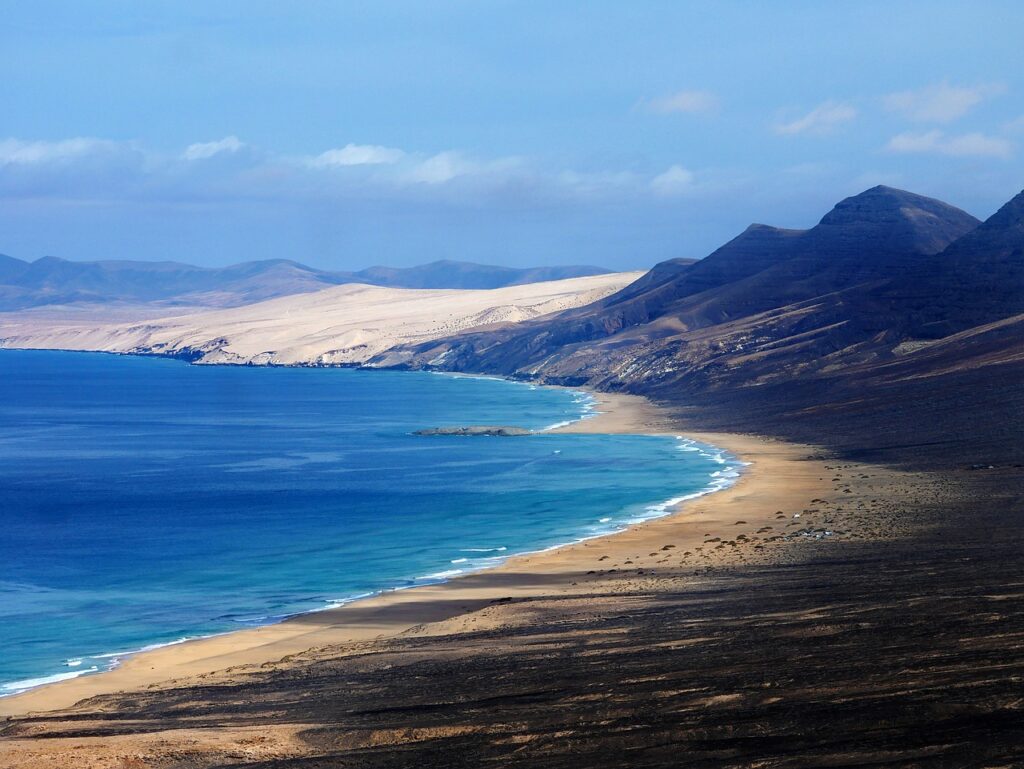
The Canary Islands are known for their stunning beaches and striking volcanic landscapes. This is a straightforward itinerary made for eco-friendly travel:
Good morning:
Take a guided tour of Teide National Park to begin your trip to Tenerife. The park is home to the tallest volcano in Europe. The average cost of a tour is $45 USD per person. Enjoy the wide-ranging views and take in the fresh air—the ideal way to begin the day.
In the afternoon:
Visit Gran Canaria for a leisurely lunch at a cafe by the sea, where prices range from $20 to $30 USD. Savor local fare at tiny market stalls while strolling along the promenade.
Evening:
Visit Timanfaya National Park in Lanzarote. The cost of admission is about $40 USD, and a quick guided tour costs an additional $20 USD. Spend about $25 USD on a quiet dinner at a nearby restaurant to cap off the day.
This itinerary emphasizes eco-friendly tours and respect for nature, which is in line with the Spain Tourist Ban.
Balearic Islands Itinerary
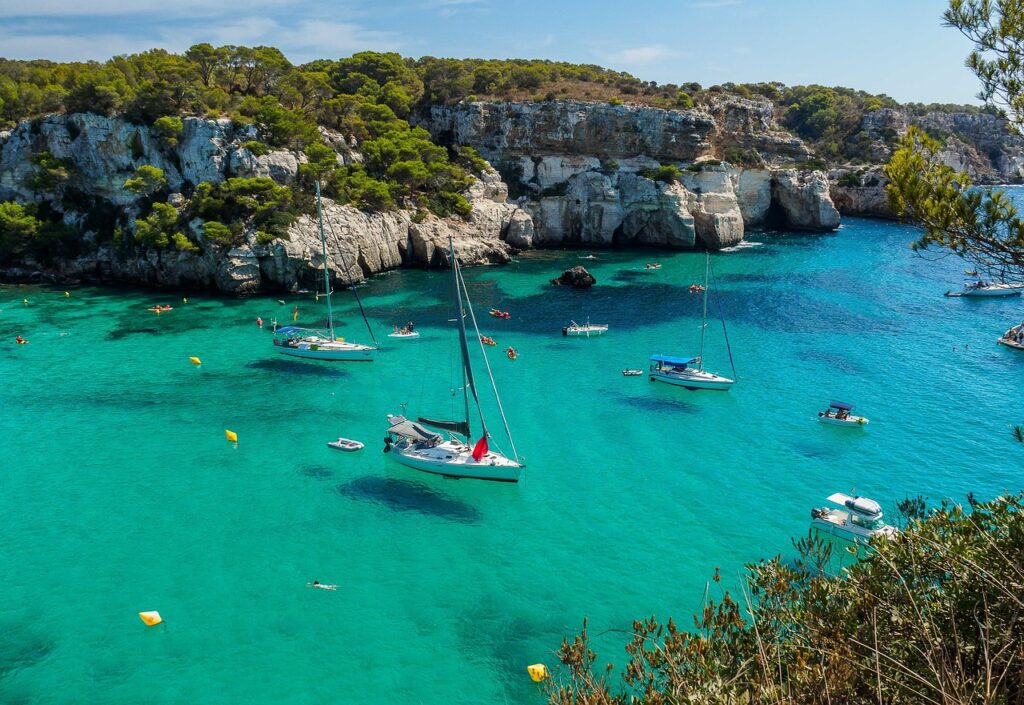
Ibiza, Menorca, and Palma de Mallorca are all part of the Balearic Islands. This itinerary combines leisure and culture:
Good morning:
Take a walking tour of Palma de Mallorca’s historic center to get started. The average cost of the tour is $20 USD per person. An immersive cultural experience is produced by the old buildings and winding streets.
In the afternoon:
Avoid the usual party scenes and visit the local art markets when you visit Ibiza. In Ibiza, a light lunch could run you anywhere from $15 to $25 USD. Explore the island’s charming villages if you have the time.
Evening:
Enjoy a sunset dinner at a restaurant by the sea to cap off your day in Menorca. Meals should cost about $30 USD. This more leisurely pace aligns with the principles of the Spain Tourist Ban.
Barcelona Itinerary
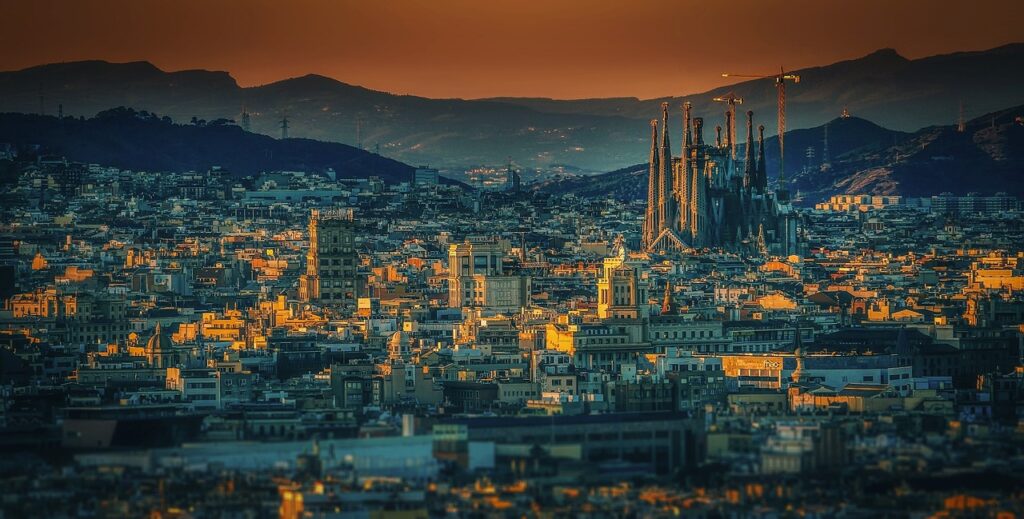
Barcelona is still a lively city, but it now follows more stringent tourism regulations. To enjoy its rich history and contemporary pleasures, follow this itinerary:
Good morning:
Begin at the famous Sagrada Familia. The cost of a basic admission ticket is about $30 USD. After that, stroll around the Gothic Quarter, where stories about historic Barcelona can be found around every corner.
In the afternoon:
Spend between $20 and $35 USD on a light lunch at a neighborhood tapas bar. Next, pay $12 USD to enter Park Güell. Savor the expansive vistas and creative mosaics in the park.
Evening:
Take a stroll along La Rambla and take in the street performances and local shops. The average cost of dining at a contemporary bistro is $35 USD. As advised by the Spain Tourist Ban guidelines, stay aware of local protest schedules and steer clear of congested areas.
Madrid, Malaga, Seville, and Other Key Cities
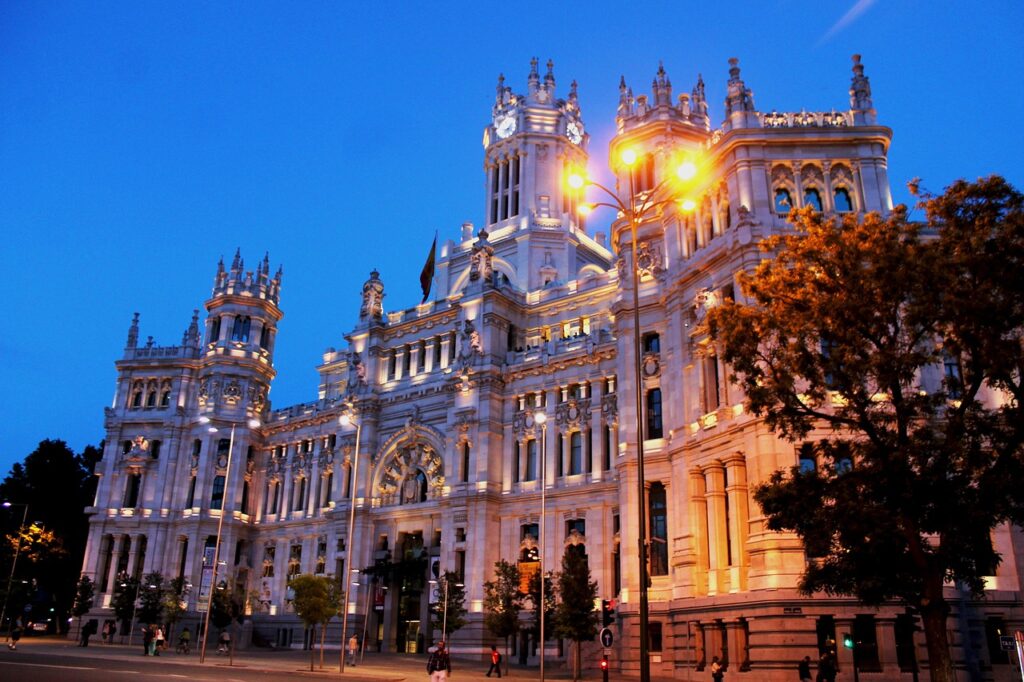
The mainland of Spain provides urban experiences that combine modernity and tradition. This is a recommended itinerary for a number of important cities:
Madrid
In the morning, go to the Prado Museum. It costs about $18 USD to enter. After that, unwind in Retiro Park while enjoying a small snack that costs about $15 USD. For about $25 USD, take a tour of the Royal Palace in the afternoon. Spend around $30 USD on dinner to cap off the day along Gran Vía.
Malaga
Start your time in Malaga by taking a tour of the Picasso Museum, which costs about $12 USD. Later, take a walk around the old port. In Malaga, a local lunch costs about $20 USD. Enjoy fresh seafood at a reputable restaurant in the evening (about $35 USD). The stringent rental laws in Malaga are a reflection of Spain’s Tourist Ban policy.
Seville
Visit Seville’s Alcázar to start your day. The cost of a guided tour is approximately $25 USD. Spend around $20 USD on a midday meal at a traditional Andalusian restaurant. See a live flamenco show in the evening; tickets cost between $30 and $45 USD. The core of sustainable tourism is this cultural immersion.
Additional Cities:
Think about visiting other cities that support eco-friendly travel strategies. As tourists look for alternatives to congested urban centers, smaller towns are now seeing an increase in visitors. These locations are frequently more affordable and provide a unique perspective on regional customs.
Every itinerary is made to enable travelers to have a meaningful trip while keeping costs transparent. Overtourism will not jeopardize these experiences thanks to the Spain Tourist Ban measures. Nowadays, tourists can spend money on high-quality excursions that honor regional traditions and encourage sustainability over the long run.
Tips for a Smooth and Respectful Trip
Respect and readiness are key components of adhering to the new Spain Tourist Ban regulations. For first-time tourists considering a trip to Spain in 2025, consider the following travel advice:
- Before departing, check the local news:
Keep yourself updated on any demonstrations or developments in major cities such as Barcelona, Palma de Mallorca, and the Canary Islands. The most recent information can be found on official tourism websites and local news sources.
2. Always carry the appropriate identification:
Keep your passport or a picture ID from the state with you at all times. Visitors are required by local regulations under the Spain Tourist Ban to carry identification, particularly in crowded areas.
3. Reserve Official Housing:
Only book through authorized rental agencies or registered hotels. This guarantees that you are not endorsing unlawful housing practices. Verify that the lodging option you have selected conforms with local laws.
- Use Public Transportation: In cities like Madrid and Valencia, download local transit apps like Renfe for trains or EMT for buses. Public transit is effective at lowering traffic and its negative effects on the environment.
Arrange Your Itinerary in Advance: Arrange your daily activities and be mindful of local regulations to prevent hurried or uncertain travel. This enables you to respect local laws and avoid protest areas.
- Be Aware of Your Behavior: Honor regional traditions. Steer clear of noisy, disruptive behavior, especially in neighborhoods. Observe regulations such as those prohibiting drinking in public and smoking.
Learn a Few Phrases in Spanish: A little language practice goes a long way. You can improve your relationship with locals by simply saying hello and “thank you.”
- Keep an eye on your financial expenses: All prices listed in this guide are expressed in US dollars. To stay within your budget and still have enjoyable experiences, keep a basic spending log.
These straightforward guidelines, which are founded on the Spain Tourist Ban’s tenets, will facilitate your travel and demonstrate consideration for the local communities.
The Future of Tourism in Spain

Spain is still a popular travel destination worldwide. A move toward sustainable tourism is indicated by the recent upsurge in protests and new rules. Balance is the key to the Spain Tourist Ban. The goal is to welcome visitors who support local economies without interfering with daily life. The new regulations make sure that Spain is a destination for both vacationers and residents, whose customs and way of life are respected.
One of the main drivers of the economy will remain tourism. But the emphasis is shifting away from numbers. Rather, Spain is promoting authentic and high-quality experiences. Cultural and ecotourism innovations are promising. The initiatives under the Spain Tourist Ban imply that tourism can develop into a collaboration between tourists and communities. Visitors may have even better experiences in the future as a result of their involvement in a sustainable travel model.
Visitors are encouraged to look beyond the typical attractions by the new trends. More unusual experiences gain appeal as well-known tourist destinations adapt to these new rules. Spanish customs and everyday life may be better understood in small towns and cultural centers. For those who prepare ahead of time and recognize the subtle variations in each location, this diversification offers a more comprehensive travel experience.
The Spain Tourist Ban is a reminder to be wise, considerate, and tolerant. It is an invitation to travel in ways that are sustainable, mindful, and ultimately fulfilling. By accepting these shifts, visitors contribute to the development of a setting that preserves the natural beauty and fosters local identities.
Final Thoughts
A revolution in tourism is about to occur in Spain. The Spain Tourist Ban’s rules and community projects aim to improve everyone’s vacation experience. Today, travelers can enjoy genuine cross-cultural exchanges, eco-friendly travel strategies, and carefully planned itineraries that highlight Spain’s most beautiful history, cuisine, and landscapes. Responsible travel enhances every experience, whether you are touring the Canary Islands’ volcanic parks, the Balearic Islands’ historic streets, or Barcelona and Madrid’s architectural marvels.
Better service, more courteous interactions, and a closer connection to the local community are all benefits of this new travel environment for first-time tourists. Although it might take some getting used to, the long-term benefits portend a better future for Spanish tourism. In a literal sense, the Spain Tourist Ban is not a ban. It is a well-thought-out plan to protect local interests while providing tourists with an enjoyable, first-rate vacation experience.
Make advance plans, keep yourself updated, and set out on a trip that respects Spain’s rich customs and culture. Savor each moment and remember that you are a part of a global movement to balance tourism. Discover a Spain that is both delightful and respectful of its own heritage by following the new regulations.
Follow me on Facebook: https://www.facebook.com/profile.php?id=61574792461434
Follow me on Twitter : https://x.com/EcoTrip360


